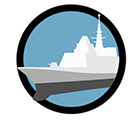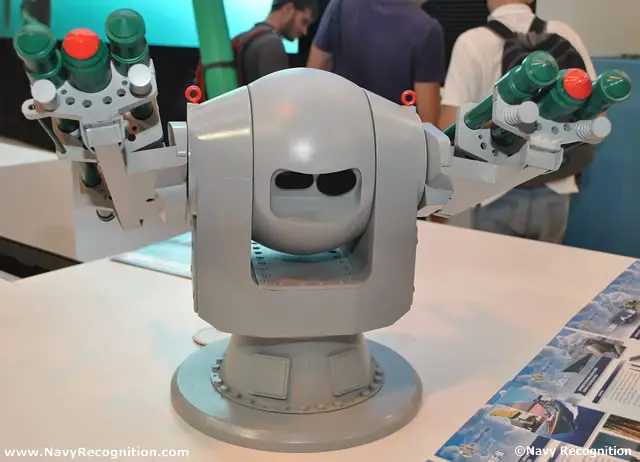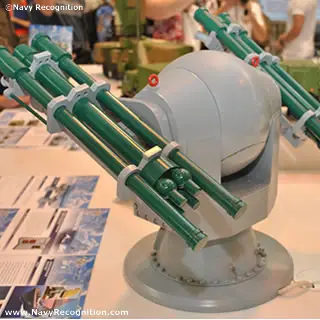|
|
||||||||||||||||||||||||||
| a | ||||||||||||||||||||||||||
|
Gibka 3M-47 naval turret mount, air defense missile system
(Also known as 3M47 Ghibka, 9K310, 9M310, 9M313, Igla-1, Igla-M, SA-16, SA-N-10 Gimlet) |
||||||||||||||||||||||||||
|
|
||||||||||||||||||||||||||
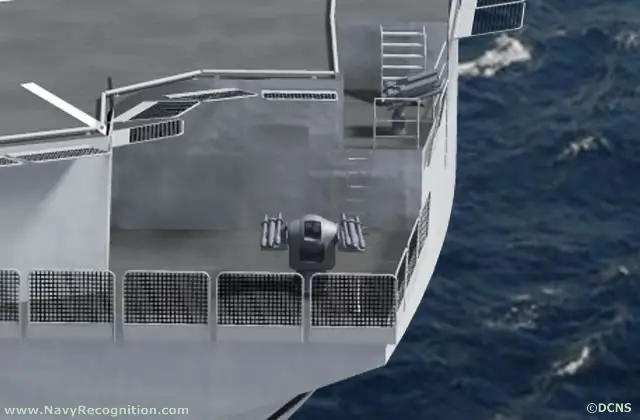 |
||||||||||||||||||||||||||
|
|
||||||||||||||||||||||||||
|
The 3M-47 Ghibka turret was designed by Altair Naval Radio Electronics Scientific Research Institute and is manufactured by the Ratep Joint Stock Company. |
||||||||||||||||||||||||||
|
Variants: |
||||||||||||||||||||||||||
| Technical Data | ||||||||||||||||||||||||||
| Composition | ||||||||||||||||||||||||||
|
The Ghibka 3M-47 system comprises: |
||||||||||||||||||||||||||
| 9M39 missiles (SA-18 Igla) | ||||||||||||||||||||||||||
| The 9M39 missile employs an IR guidance system using proportional convergence logic. The new seeker offers better protection against electro-optical jammers; the probability of kill against an unprotected fighter is estimated at 30-48%, and the use of IRCM jammers only degrades this to 24-30%. | ||||||||||||||||||||||||||
| 9M342 missiles (SA-24 Grinch Iglas-S) | ||||||||||||||||||||||||||
| The effectiveness of the 9M342 missile against air targets is attributed to the increase weight of the explosive in the missile's warhead and to the impact/proximity fuze enabling the missile to kill the target both in the event of a direct hit and when it passes at a distance of up to 1.5 m from the target. The target engagement has increased to 6 km compared with the 5.2 km of the Igla (SA-16 / SA-18) system. | ||||||||||||||||||||||||||
| Operation | ||||||||||||||||||||||||||
| The turret is remotely operated and can be steered towards targets detected by the Positiv, Furke or Fregat naval radar systems. Final aiming is achieved at the control module through a TV sighting system. According to constructor specifications, the visual detection range of an aircraft through the control module is 12 to 15 Km. | ||||||||||||||||||||||||||
| Specifications | ||||||||||||||||||||||||||
|
||||||||||||||||||||||||||
|
|
||||||||||||||||||||||||||
 Ghibka 3M-47 turret with 4 launch modules (8 SAM) Ghibka 3M-47 turret with 4 launch modules (8 SAM) |
||||||||||||||||||||||||||
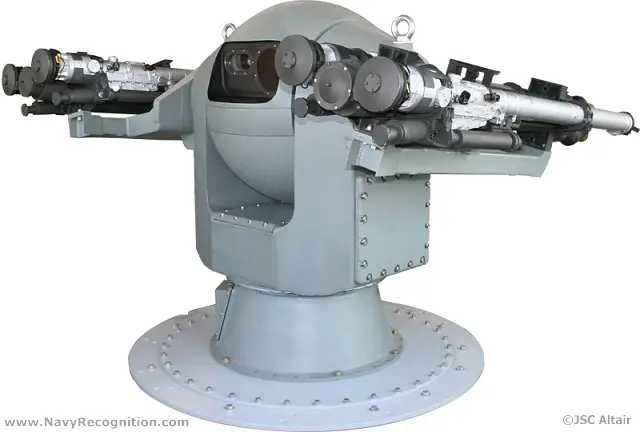 Ghibka 3M-47 turret with 2 launch modules (4 SAM) Ghibka 3M-47 turret with 2 launch modules (4 SAM) |
||||||||||||||||||||||||||
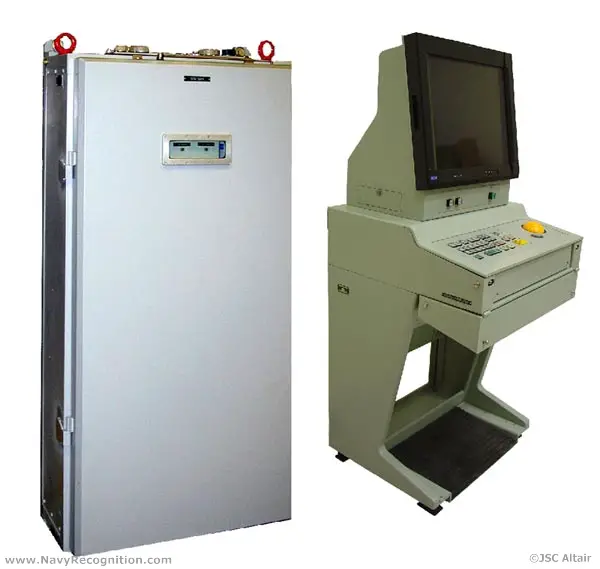 Ghibka 3M-47 Control Module & Workstation Ghibka 3M-47 Control Module & Workstation |
||||||||||||||||||||||||||
|
||||||||||||||||||||||||||
|
|
||||||||||||||||||||||||||
There are no images in the gallery. |
||||||||||||||||||||||||||
|
3-M47 Ghibka 3M47 Gibka 9K310 9M310 9M313 Igla-1 Igla-M SA-16 SA-N-10 Gimlet
|
||||||||||||||||||||||||||
